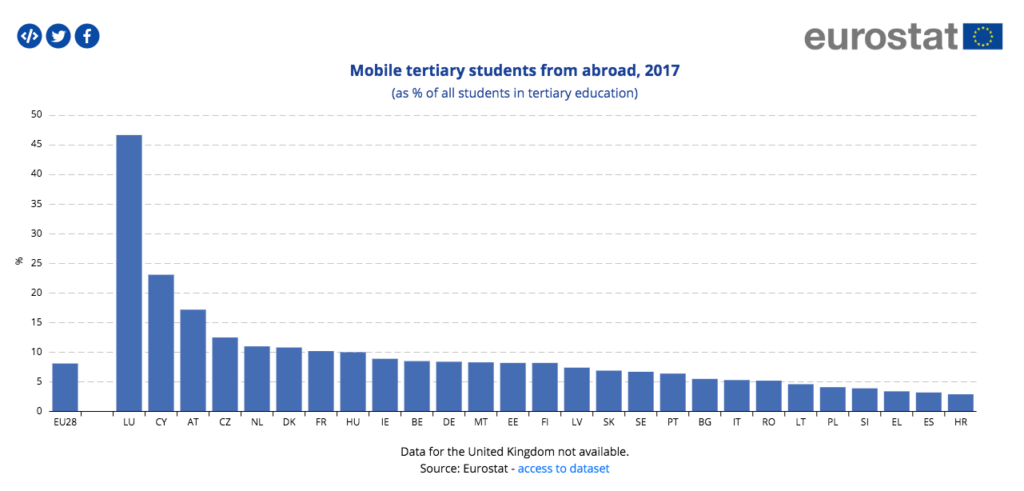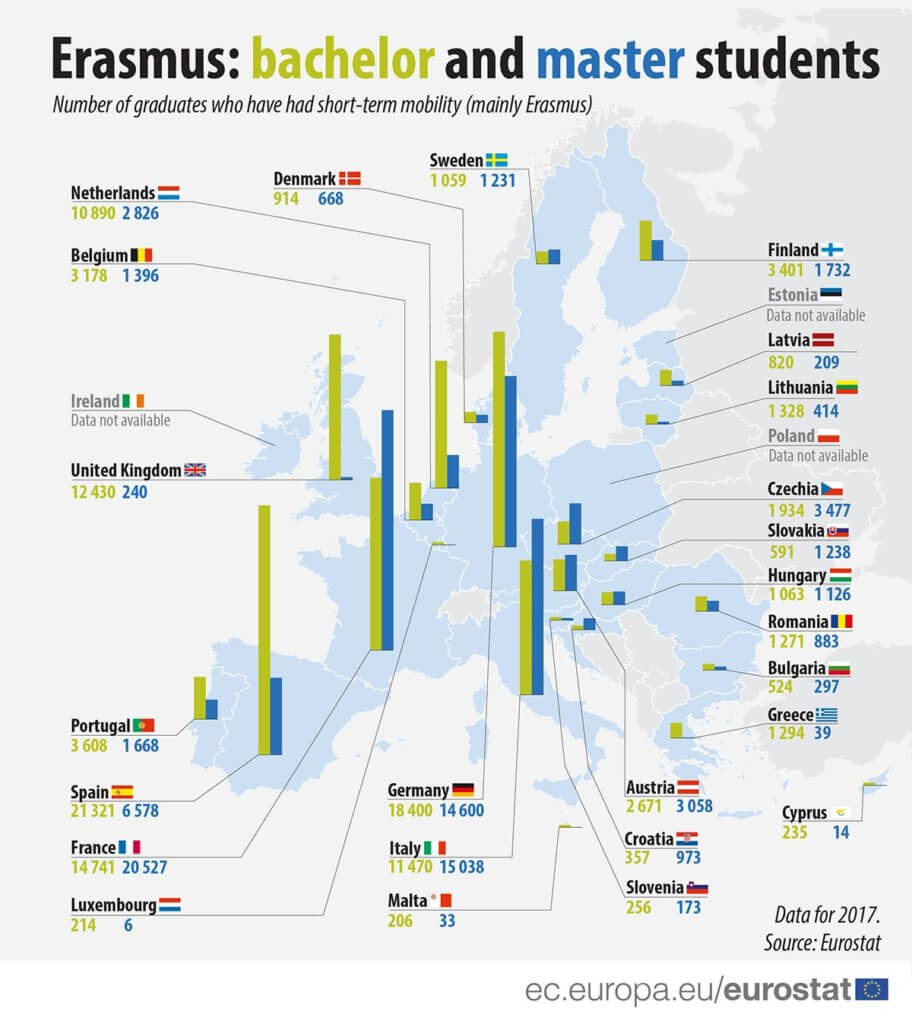Stay in the loop! Subscribe to our mailing list
A new Eurostat e-publication – People on the move – statistics on mobility in Europe – presents some of the latest international student mobility figures in the EU framework, in a broader context of mobility determined by other factors than education, such as work, commuting, tourism and overall migration. The publication is divided into four chapters, each containing four sections:
With regards to international student mobility, the Studying and working abroad section shows that, in 2017, there were a total of 1.7 million degree mobile students in the EU coming from abroad (both from another EU member state and from outside the EU), a 22% increase compared to 2013. These students accounted for 8.1% of all enrolled tertiary students in the EU in 2017, with some notable differences between member states.

As for graduates with a credit mobility (mainly Erasmus) experience, in 2017, around 114 000 Bachelor’s graduates and about 78 000 Master’s graduates had spent a period abroad on Erasmus.

For the Erasmus+ Bachelor’s graduates, the main exchange destination countries, hosting more than two thirds of all Erasmus-mobile Bachelor’s graduates, were:
In turn, for the Erasmus Master’s graduates, the top destinations, attracting almost two thirds of all Master’s graduates that went abroad on Erasmus, were:
Overall, 7.8% of the EU population in 2018 had a nationality other than their country of residence: 3.4% had the citizenship of another EU member state and 4.4% were non-EU citizens. On average, almost one in three people (31 %) in the EU who have the citizenship of another EU member state (than the one they were living in), had a high educational level (tertiary education), while this was the case for 28% of all nationals and 24 % of non-EU citizens.